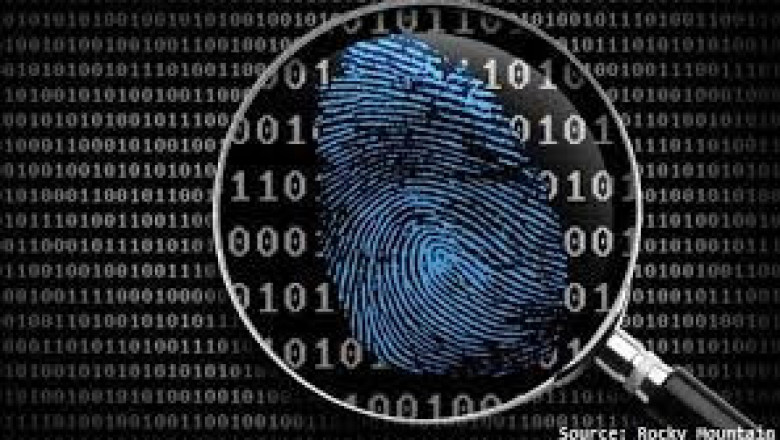views


Law 2.0 Conference Reviews The Current State Of Digital Forensics And The Evolving Legal System
With the swift development of technology and the invention of smartphones, the internet has made the lives of everyone much more effortless. But as once told by the prominent scientist of all time, Albert Einstein, "Technological advancement is like an ax in the hands of a pathological criminal." However, technological development is advantageous, allowing criminals to devise different types of cybercrime.
The relevance and importance of digital forensics in today's law are significant. Top lawyers and enforcement professionals will review this topic in greater detail in our upcoming Law 2.0 Conference. Before knowing how digital forensics combined with the law of evidence is the future of investigative decision-making, let us first understand what we mean when we hear digital forensics and other essential features of digital forensics.
What Is Digital Forensics?
Digital forensics or cyber forensics is an important emerging area of evidence law, but very little is understood by the lawyer community. The surge of technological advancement has changed the archaic way of collecting and generating evidence. The intangible nature of digital evidence, coupled with the fragile structure of the internet, has posed an intrinsic barrier to collecting and preserving digital evidence.
Digital forensics is identifying, preserving, extracting, and documenting the digital shreds of evidence. In law, the usage of suitable forensics tools and techniques to recover digital evidence within the contours of the rules of evidence for it to be admissible before the court of law can be defined as digital forensics.
Various esteemed lawyers and cyber security experts from the Law 2.0 Conference have suggested that the electronic evidence obtained must meet the crime attribution criteria to the perpetrator by tracing its digital footprints by preservation, extraction, interpretation, and documentation of digital evidence. It seeks to protect the subject computer, discover all the files of the system, recover deleted files, reveal the content of hidden files, access the contents of protected or encrypted files, inspect the relevant data and provide testimony based on analysis of the given evidence.
Branches In Digital Forensics
As digital devices include not only computers and extend to mobile devices, networks, flash drives, etc., retrieving data from these devices is also necessary. Some essential digital forensics include:
-
Computer forensics means retrieving data from a computer and static memory like embedded systems and USB.
-
Database forensics is used to do a forensic analysis of databases and their metadata.
-
Network forensics analyzes and monitors information and evidence from computer networks locally or remotely.
-
Mobile forensics is used to recover digital evidence like SMS or email from a mobile device.
-
Forensic data analysis is a division of digital forensics that examines structured data regarding incidents of financial crime. The aim is to analyze and discover the pattern of fraudulent activities.
Digital Forensics In Law
Digital forensics is applied in various fields and sectors. Both national and international legislation covers digital forensics. Since every law is toothless without an enforcement mechanism, it is also necessary to understand it. Understanding the computer-related crime's effect and nature becomes relevant in such a scenario. Whether the computer is used as a means or target for conducting any illegal activity, it is essential to know that, for an act to be investigated as a cybercrime, it has to be under the law.
Interception of message traffic as a means of espionage and law enforcement is an excellent way of gathering information, but one that is very intrusive to privacy. Consequently, wiretapping as a means of evidence has presented particular concerns and unique problems for the legal system.
The legal system has carefully controlled the collection of electronic evidence by telephone wiretap through statutes such as the Wiretap Act and the Electronic Communications Privacy Act (ECPA). As digitized telecommunications systems have increasingly held up the communications of governments, businesses, and individuals, law enforcement and private claimants alike have sought digital information online, sometimes with interceptions analogous to telephone wiretaps.
There must be digital access to the data required for forensic purposes. Congress approved the Communications Assistance for Law Enforcement Act (CALEA) to ensure access, sometimes called the digital telephony bill. CALEA was intended to ensure that its systems are technically efficient in enabling law enforcement agencies with proper legal authority to intercept individual telephone calls and obtain certain information.
Merits Of Digital Forensics In Law Enforcement
-
Digital forensics can be used as evidence in a court of law. With the evidence obtained, the identification of the culprit becomes easier.
-
One can extract evidence even from deleted files and partitions through data acquisition and duplication. It helps the investigator in recovering and preserving digital devices related materials.
-
Designing procedures make sure that the corruption of digital evidence is under control.
-
Identifying any malicious activity on the victim can be done very quickly.
-
Presenting the evidence can be done for future reference.
Steps Of Investigation To Collect Digital Evidence
-
The first and foremost step in collecting evidence is identification. We must identify the scope of the action before beginning any form of examination in digital forensics. The process of searching and detecting digital evidence is done here. This process also includes what evidence is presented and where and how it is collected. The digital evidence first responder must examine all the evidence used in the preparation of the crime.
-
The process of collecting evidence is known as acquisition. This evidence is collected from electronic media like personal computers, mobile phones, etc. Investigators acquire data through the following four methods, disk to disk copy, disk to image file, logical disk to a disk file, and sparse data file to a folder.
-
The data should be isolated and preserved in a secured physical site to prevent digital evidence from being changed or altered. Preservation of digital evidence helps to reduce tampering with evidence. Criminal cases should be examined through the law imposed to preserve evidence. The company officer performs this examination in civil cases.
-
Numerous reiterations of analysis take place to support a crime theory. Based on the evidence found by the investigators, a conclusion will be derived by reconstructing the events.
-
Documenting is a critical process of digital forensics. Recreating the crime scene is done in this process by documenting the crime scene in proper documentation. Photography, screen scene mapping, and sketching can be done in documents based on the crime requirement for better understanding. At last, the collected document will be summarized and explained.
Emerging Problems
As taxing as the profession of digital forensics has been to date. Still, more concurrent problems are looming on the horizon. Computers are increasing throughout modern society, and as their numbers grow, they change in size, shape, speed, and functionality. Today, we have personal computers, supercomputers, distributed client-server networks, and laptops, all of which can sometimes provide digital evidence. We have networks that use fiber optic cables, coaxial wires, radio, and infrared radiation to convey information. Digital evidence stored in one computer is comfortably available to a miscreant using another computer several jurisdictions away.
As reviewed by legal experts at Law 2.0 Conference, to fight e-crime and to gather relevant digital evidence for all crimes, law enforcement firms are integrating the collection and analysis of digital evidence into their infrastructure. Law enforcement agencies are tested by the need to train officers to gather digital evidence and keep up with rapidly evolving technologies such as computer operating systems. The separation between virtual and physical worlds that once existed is no longer possible. Despite this, today's most prevalent digital forensics investigations models still provide a framework separate from the criminal investigation process.
Because technology has become integrated into almost every aspect of our daily routine, every violent crime should include digital evidence. One of the significant hurdles in digital forensics is the constant rate of technology change. It makes it difficult for law enforcement, forensic experts, and the courts to develop standardized procedures for active investigations and maintain the accuracy and trustworthiness of digital evidence stored after being heard in court for re-examination in case of an appeal.
As computers become smaller, quicker, and cheaper, computers are increasingly embedded inside other larger systems in ways that are not always apparent and allow data to be created, stored, processed, and communicated in unprecedented ways. Consequently, digital evidence can emerge in unexpected places and forms.
From environmental surveillance to interactive control of heart rhythms, digital evidence will be even more challenging to collect and analyze and more brutal to present in a court of law. Computerized control systems handle banks, factories, retail inventories, corporations, and government agencies. Computers and software programs are embedded in our cars, trains, and planes, in tools, machinery, telecommunications systems, public switched networks, and even in our bodies. Each of them is a possible source of digital evidence, the collection, storage, analysis, and representation of which is and will be inhibited by developing legal standards and constraints that we fail to understand. Digital forensics will undeniably strengthen the legal system, and our legal experts at Law 2.0 Conference are here to lead the way in the forthcoming attorney conference this winter.












